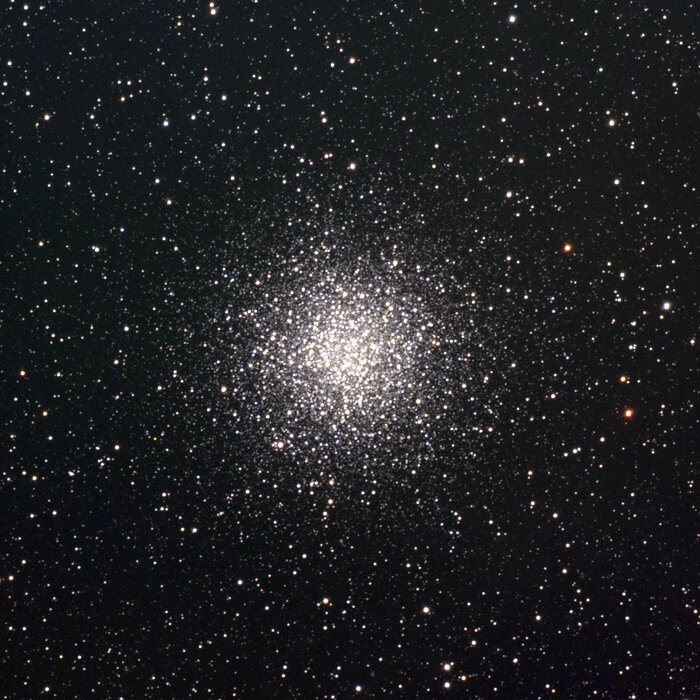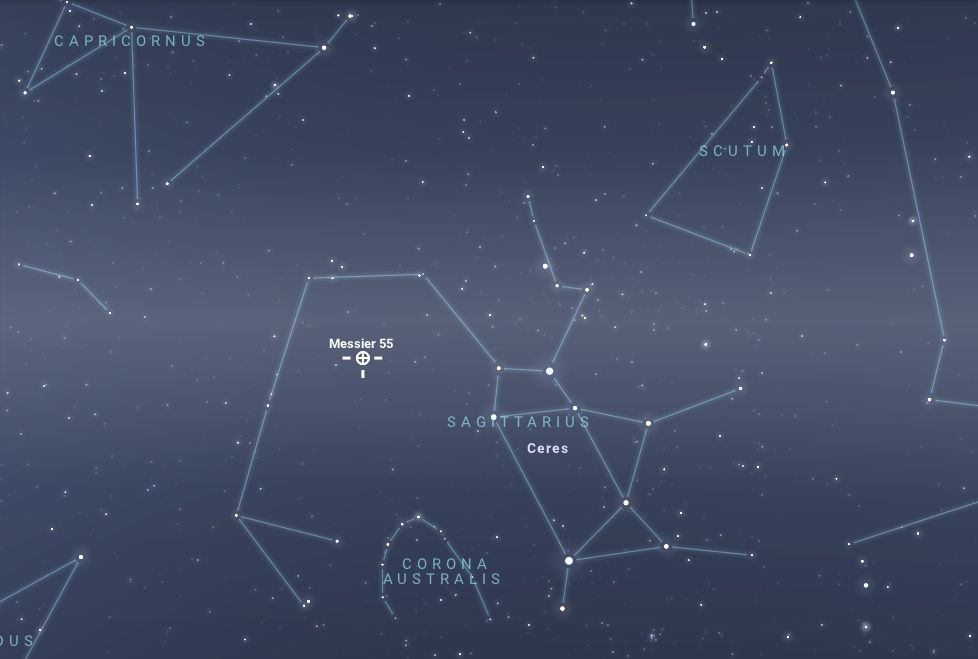M55, also known as the Sceptre Cluster (or sometimes the Spector Cluster), is a stunning globular cluster situated in the constellation Sagittarius. Globular clusters are dense collections of stars that are gravitationally bound, typically containing anywhere from thousands to millions of stars. M55 is one of the many beautiful globulars scattered throughout our Milky Way galaxy.
It was first discovered by the French astronomer Nicolas Louis de Lacaille in 1752 during his expedition to the Cape of Good Hope. Later, Charles Messier included M55 in his catalogue of celestial objects as the 55th entry. The cluster stands out not only for its size and brightness but also for its relatively high density of stars, making it a striking target for astronomers.
Physical Characteristics
The Sceptre Cluster is located approximately 17,600 light-years away from Earth, a considerable distance that places it deep within the heart of the Milky Way. It has a diameter of about 100 light-years, making it one of the larger globular clusters. Its dense, compact nature distinguishes it from some other globulars, containing hundreds of thousands of stars that are packed closely together in a spherical arrangement.
The stars within M55 are old and metal-poor, which means they have lower amounts of elements heavier than helium. This is a typical feature of globular clusters, where stars are formed early in the universe’s history. These stars are in their later evolutionary stages, contributing to the cluster’s ancient appearance. The stars all orbit around its centre of mass, held together by the intense gravitational pull of the cluster itself. As with other globular clusters, M55 follows the general motion of the Milky Way as it orbits the galaxy’s centre.

Visual Appearance
The apparent magnitude of M55 is approximately 6.3, which means that under dark sky conditions, the cluster is barely visible to the naked eye as a faint, blurry spot. However, through binoculars or a small telescope, M55 becomes much more distinct and its compact spherical shape is noticeable.
When observed through binoculars or a telescope, it presents itself as a bright cluster of stars, with its core densely packed with stars. The outer regions of the cluster, however, have a more diffuse appearance, adding to the sense of depth and structure. The cluster’s relatively high density of stars makes it stand out compared to other clusters, especially when viewed from dark, remote locations free from light pollution.
Scientific Interest
Globular clusters like M55 hold great scientific interest because they provide valuable insights into the formation and evolution of galaxies. By studying the properties of the stars within these clusters, astronomers can learn more about the age, composition, and early conditions of the universe. The old age and metal-poor nature of the stars in M55 make it an excellent subject for investigating the earliest stages of star and galaxy formation.
Furthermore, as M55 is part of the Milky Way’s globular cluster system, it offers clues about the motion and dynamics of stars within the galaxy. Understanding how these clusters evolve over time helps astronomers piece together the broader history of our galaxy and its stellar populations.
Observation
M55 is a relatively easy object to observe with binoculars from a dark site. It can be resolved into individual stars with a small telescope, making it an excellent target for amateur astronomers. It is best observed from the Southern Hemisphere during winter, typically from June to August. During this time, M55 is high in the sky, offering an optimal viewing experience. By late September, the cluster begins to set earlier in the evening, and its visibility gradually diminishes as the months progress.




